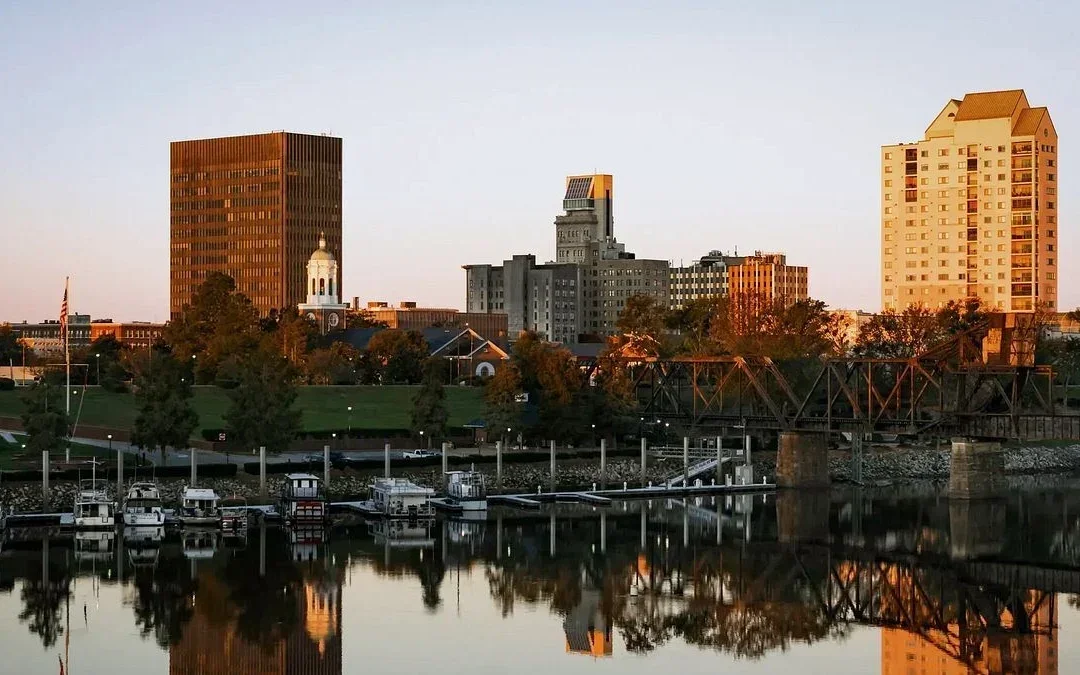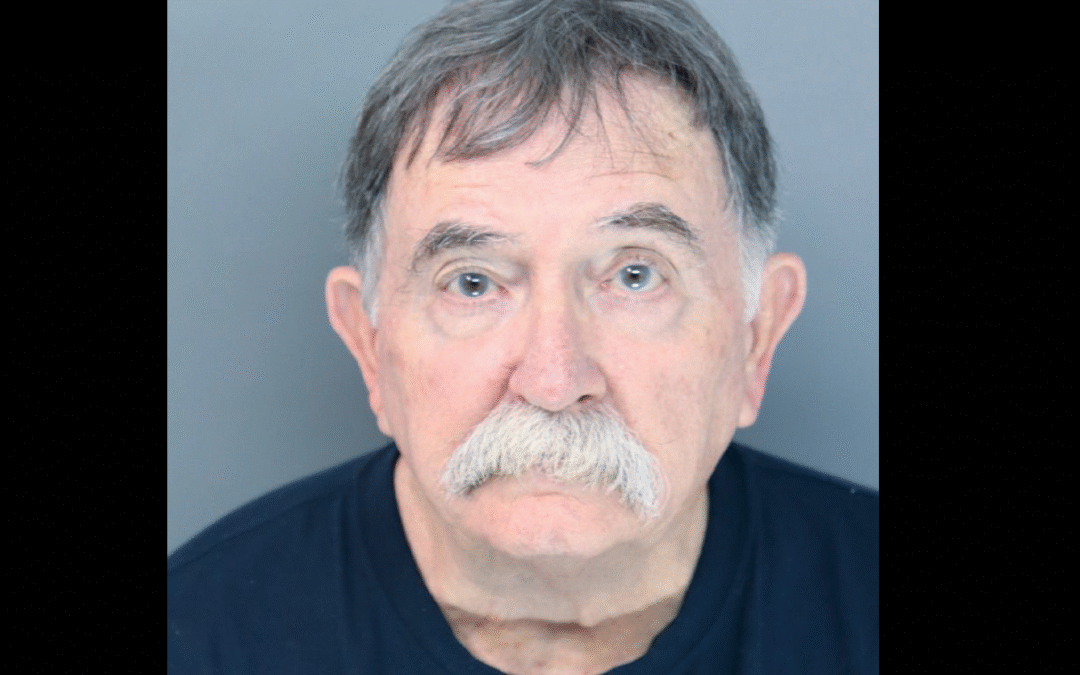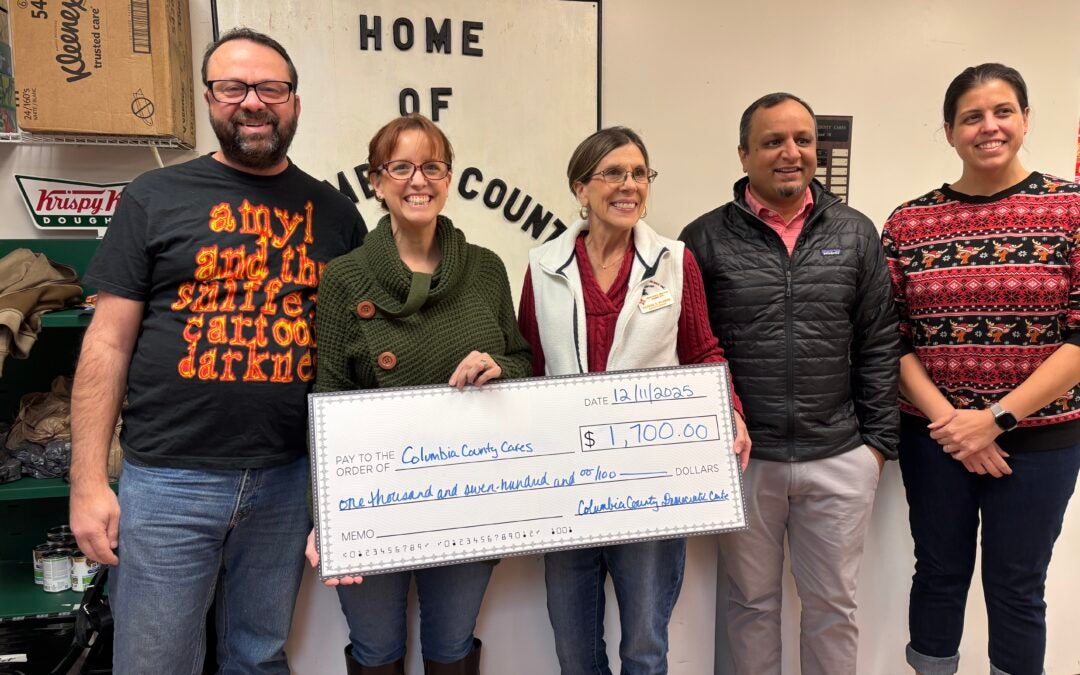The main difference between a pilgrimage and a trip is the purpose of the journey. For two weeks in September, I was invited on an intentional pilgrimage to England. This was not my first time in Great Britain. I traveled to England and Scotland 20 years ago as a tourist. I went there to see the sites and places that I had studied and read about in World History and Literature. Then, I passed through and marveled at places and things as they connected with my memory and study. It is 20 years later, and now I am in the same land, this time I am a pilgrim and not a tourist. many of the same places I passed through as a tourist, are now passing through me as these places and images quicken my soul in a different way.
Opinion
I traveled with a group of 30 pilgrims, 24 of whom I did not know before we arrived in London, and there we became fast friends. Our connection to the Virginia Theological Seminary in Alexandria, Va., is what we all had in common, and we were on a spiritual journey to experience God in that thin place where the Christian church was born in Great Britain, the land where Alban was the first to stand up for the Christian faith in a place where Jesus was not worshiped there.
I was the pastor and rector of a church in Augusta named St. Alban. Alban was not a Christian, but he sheltered and protected a Christian priest from the Romans and became the first to be martyred as a Christian in Northumbria, Roman Britain. I have always shared a fondness for the Patronal Saint Alban and the parish church in Augusta that bears his name.
A pilgrimage is a journey to a sacred place for the purpose of seeking God, venerating the site and coming to know God better. It’s a devotional journey that’s more than just visiting a holy place. Pilgrims may visit holy sites, pray, and journal, and the journey itself is often considered important.
Christianity came to England in Roman Britain in the fourth century. However, as we discovered, Augustine came to Canterbury in 597CE and became the first archbishop of Canterbury. The English Reformation occurred in the 1530s when Henry VIII insisted that he needed to be free to marry again. So, the Act of Succession and the Act of Supremacy were passed. Then, we had a turbulent time; Edward VI allowed protestant reforms; Mary in 1553 persecuted protestants; and Elizabeth I in 1558 made the Book of Common Prayer and the Thirty-Nine Articles of Religion official.
It is with this background that we began our pilgrimage to trace Anglicanism in England, entitled: “Grace & Gardens in England’s Green and Pleasant Land.” Our trip took us to Canterbury, the origin of it all for Anglican Christians. We visited places where church and state are not separated, like Westminster Abby and Saint Paul’s, London. So, we saw what happens when individuals, such as kings and popes, had egos that blinded them from pursuing what was best for others and not vendettas. Although it was in Canterbury where a king ordered the murder of a bishop while the bishop was at prayer. And it was in England where a king separated the Church in England from the Church in Rome, and the Anglican Church was nationalized. Out of all that, a beautiful practice was born, called the Anglican Communion, of which I am a part, through the Episcopal Church.
Several of us were asked to write brief reflections to summarize the day’s events and experiences. I would love to give you a detailed account of each of the wonderful fourteen days, but time only allows for some brief highlights.
On Sunday, Sept. 8, one of our pilgrims, Jennifer, wrote: “Today we were delighted to attend Eucharist as guests of The Very Rev. Dr. Mark Oakley, Dean of the Southwark Cathedral. In his sermon, Dean Oakley shared a particularly personal story. He recently reconnected with his birth mother and learned that he had been misled about the circumstances of her leaving. All his life he believed she had left because she didn’t care about him. She was able finally to explain that she had suffered severe postpartum depression, which led to divorce and loss of custody. She explained that she had always loved him, followed his entire life from a distance and was very proud of him. He left the meeting with a new understanding of the situation, which transformed his life from then on. His sermon encouraged us to allow the Spirit to enter, give us a clearer understanding of God’s love for us and transform our hearts accordingly.
We enjoyed a traditional English “Sunday Roast” at the Cathedral and learned a bit about its history. Lancelot Andrewes oversaw the translation of the King James version of the Bible there. C.S. Lewis was influenced significantly by the writings of Lancelot Andrewes. William Shakespeare attended Southwark Cathedral, which is near the Globe theatre, and his brother is buried there.
Oh, and the cathedral mascot, Hodge, is a black and white cat who had the run of the place, even during the service!
I had the pleasure of writing the reflection for Monday, Sept. 9. I wrote that after breakfast, we traveled, from where we lodged in London for four nights, the short distance across Lambeth Bridge to Lambeth Palace, which is the official residence of the Archbishop of Canterbury Justin Welby, who is the ecclesiastical head of the Anglican Communion. We were delighted to have the archbishop of Canterbury lead us and the palace staff in morning prayer. After morning prayer, we had a guided tour of the palace gardens and the archbishop’s private chapel, where we saw the window where the desk is located where Thomas Cranmer wrote the first Book of Common Prayer in 1549.
One of the palace gardeners guided us through the palace gardens, where the delight was to see a giant White Marselle fig tree, which came to Lambeth Palace in 1556 by the last Roman Catholic Archbishop to England.
Our pilgrimage continued in the afternoon when we visited Westminster Abbey. The dean of Westminster Abbey hosted us for lunch in the Jerusalem chamber. Some significant events happened in this room at Westminster Abby. This is the room where Lancelot Andrewes presented the KJV of the Bible, and it was read aloud for the first time to King James I for his approval. This is also the room where King Henry IV died. It was in this room where the Westminster Confession of Faith is perhaps the most notable expression in creedal form of the truths of the Bible was worked out. It was the work of that assembly of divines which was called together by Parliament and met in London, during the years 1643-1648.
We received a personal tour of the Abbey, visiting places in the Abby that tourist don’t usually get to see. For example, we visited the archaeological site for the new King Charles III Sacristy. There we saw the excavated remains of people buried back in the times of Roman occupation. Once the excavation is completed, the new King Charles III Sacristy will be built adjacent to the Abby.
The Chapter House was the place where Parliament met before the House of Parliament was built. We visited the shrine of Edward the Confessor, the Crypts of Kings, Poets Corner, and the burial site of the Unknown Soldier from WWI at the entrance to the Abby.
The next day, we took the tube train (The Underground) to a station within walking distance of St. Paul’s Cathedral. Once again, we had a wonderful personal guide.
It was at Old St. Paul’s where I found the thin place in the most unexpected space: the American Memorial Chapel. In short, it is a chapel created by St. Paul’s Cathedral in honor of those Americans who fought and died during WWII on British soil. In the chapel, there is the Roll of Honor, a book of remembrance presented by the then Gen. Eisenhower on July 4, 1951. Over 473 pages, it lists the name, rank and service details of the 28,000 American servicemen based in Britain who died in WWII; each day a page is turned, a continuous process done since November 1958.
We had six military veterans in our pilgrimage group. I am a veteran of the US Navy; and our guide invited us each to turn a page. I turned page 253. We were all sort of in tears. A very thin place indeed. The chapel isn’t tucked away out of sight. It is directly behind the high altar, a place of honor.
After four days in London, it was time to leave. Our destination was Canterbury. The Canterbury Cathedral is the historical cathedral of the archbishop of Canterbury and is one of the oldest Christian structures in England; it is the See of the Anglican Communion. It was founded in 597 by St. Augustine who became the first archbishop of Canterbury. Augustine’s stone cathedra (bishop’s seat) sits behind the High Altar today. By-the-way, it is the bishop’s cathedra (chair) that makes the building where the chair sits a cathedral and not the size of the building. This is the place where the bishops of the worldwide Anglican Communion meet once every 10 years. It is called Lambeth because the first meeting of bishops took place at Lambeth Palace in London. Now they meet at the See in Canterbury.
Isn’t it incredible . . . We’ve visited the site of the first archbishop of Canterbury, and shared morning prayer with the 105th archbishop of Canterbury, a continuous line in our faith tradition. I am amazed just thinking about it.
At the cathedral, we attended evensong and then had a reception in the garden and dinner in the cathedral refectory hosted by a canon priest representative of the dean of the cathedral, who was on holiday. We then met with the priest and, in the dark by candlelight, did a sort of stations of the cathedral walk throughout the cathedral. The entire walk was a thin place for me. The priest paid special attention to the murder of Archbishop Thomas Becket. Thomas Becket’s murder was ordered by King Henry II. I recommend you read T. S. Eliot’s Murder in the Cathedral, for a vivid description. We ended with compline, the last prayers of the day.
Canterbury is a lovely place to wander the narrow streets, taking in the melting pot of pilgrims, visiting the cathedral and other historic places to visit in town. The University of Kent is nearby.
Today, we took a motor coach through the countryside of Kent. We arrived at Sissinghurst Castle Garden, a family estate that still has residents living on the sprawling estate. As a member of the National Trust, Sissinghurst has a country castle, active farm, and exquisite English gardens to enjoy.
Shortly after arriving, we devoured a “Ploughmans Lunch,” a lunch that the workers may have packed up and taken with them into the fields they were tending that day. Sausage roll, fresh baked breads, local cheeses, apples from the orchard, and other seasonal delicacies.
Next, we explored the gardens, a maze of manicured hedges and boxwoods, dahlias and statues and garden art. The roads that took us to our destination were as grand as the Castle Garden that greeted us.
Now, we were off to Cambridge. While in Cambridge, we visited Trinity Chapel at King’s College. This is where the beloved Nine Lessons and Carols originates and is broadcast by the BBC at Christmas time each year. At the chapel, we were greeted by Professor Nicholas Marston and given a personal tour of the chapel and an inspiring talk about music in that historic chapel. We had dinner in the Beves Room, Kings College. Cambridge University was founded by King Henry VIII.
The next day, we took a short day trip to “Little Gidding” about an hour away from this college town of 31 different schools. Each small village the motorcoach drove through seemed to be the ideal spot for a country chapel and estate. On the way to Little Gidding, the roads were seemingly more and more narrow and more and more rural, we finally arrived at the Ferrar Estate that houses the Little Gidding Chapel, St John’s. We celebrated the Holy Eucharist here, with one of our priests as celebrant. During the service, we sang acapella, “Come Thy Fount of Every Blessing” and “Amazing Grace,” while receiving communion from a chalice and patten used in the 1600s by the Ferrar Family.
We couldn’t have asked for better weather while visiting Little Gidding. We were able to walk through the grounds, enjoying the flower gardens and rural views surrounding the main house and chapel.
Following our spiritual feast, we ate a delicious lunch of locally grown carrot and apple puree soup and bread, followed by “Sticky Toffee Pudding” for dessert. We received great hospitality and were even showen some of the other heirloom communion treasures from the safe. It’s not hard to see why T.S. Eliot was so enchanted by this place that he wrote about it in his poem “Little Gidding,” the fourth and final poem in his “Four Quartets.”
It was time to move from Cambridge to Broadway. Upon arrival in this small village in the Cotswolds, we encountered a little food market and live music festival in the town square. Dogs are walking their owners around, and it’s wonderful to see all the happy people enjoying this sunny day! I can already tell that our time here will be special!
On our first day out from Broadway, we traveled to Oxford to visit Magdalen College, pronounced Maudlin, where C.S. Lewis studied, became an esteemed fellow, and wrote many of his treasured fiction and non-fiction books, notably, “Mere Christianity,” “Screwtape Letters” and the “Chronicles of Narnia.” We passed the gates of Blenheim Palace, Oxfordshire, on the way to Oxford, the birthplace of Winston Leonard Spencer Churchill, prime minister during World War II.
At Oxford University, our group had a tour of the campus including the historic chapel, the historic library with a C.S. Lewis exhibit, and the Addison trail behind campus featuring hundreds of healthy stags grazing in the deer park.
After a delicious lunch of sea bass, The Rev. Dr. Laura Biron-Scott led our presentation and tour. Laura is a Magdalen College chaplain and the rector at C.S. Lewis’ parish, Holy Trinity of Headington Quarry. We were so grateful to meet her and learn from her knowledge of one of the literary masters, CS Lewis.
On the second day out from Broadway, we visited the exquisite gardens at Highgrove. Highgrove is the private home of King Charles III and Queen Camilla. It is located just outside of the village of Tetbury. King Charles III is a master gardener and designed and oversaw the planting of these gardens himself.
Today was our last day together. Our pilgrimage resonated with us all on so many levels. We have made new friends and strengthened existing relationships through our amazing experiences over the last two weeks.
Now for our final day out, we traveled by coach from picturesque Broadway in the Cotswolds to Stratford upon Avon, a market town with eight hundred years of history.
Once there, we had the opportunity to explore this historic city. We saw the birthplace of Shakespeare, Holy Trinity Church where Shakespeare and some of his family members are buried in the sanctuary. Some of us took a relaxing and leisurely boat ride down the Avon, while the rest of us attended Shakespeare’s play, Pericles.
We ended the evening and our time together with a farewell dinner back at the Lygon Arms Hotel.
We visited sacred places for the purpose of seeking God in a place where thousands of men and women have met God over the centuries. We began our time together with only a title, “Grace & Gardens in England’s Green and Pleasant Land.” We were not tourists passing through, but we were pilgrims on a spiritual journey, letting the whole of this place pass through us.
Rev. Bill Alford is a retired priest who served St. Alban’s Episcopal Church for the last 30 years and who has been priest-in-charge of the Church of the Atonement in Hephzibah for the last three years. Originally from Albany, Ga., Rev. Alford is a Navy Veteran who sings with and who is on the Board of Directors for the Augusta Choral Society.














